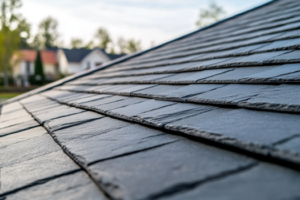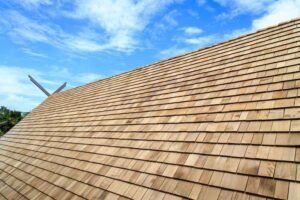At A1 Quality Roofing, quality isn’t just in our name—it’s in everything we do. From the materials we use to the care we take with each project, we’re committed to making sure your roof performs at its best. But there’s more to a fantastic roof than what meets the eye. One often overlooked aspect is attic ventilation. It’s not just about keeping your attic cool. Proper ventilation can make a huge difference in your home’s comfort, energy efficiency, and even the lifespan of your roof. Let’s dive into some key facts about attic ventilation and explore a few tips to ensure your attic works for you, not against you.
The Importance of Attic Ventilation
Attic ventilation is vital. It’s the silent workhorse that helps regulate temperature, moisture, and airflow in your home. Without it, your attic could turn into a furnace in the summer, with temperatures soaring up to 150°F. This excessive heat isn’t just uncomfortable; it can also speed up the wear and tear on your roofing materials, leading to costly repairs or even premature replacement.
In the winter, things don’t get any better. Moisture from everyday activities like cooking, showering, and breathing can rise into your attic. If that moisture cannot escape, it can cause mold, mildew, and wood rot. Even worse, it can undermine the very structure of your roof. The consequences are serious. Yet, many homeowners don’t realize how much attic ventilation can protect their investment until it’s too late.
Interesting Facts About Attic Ventilation
Balanced Ventilation is Essential:
For attic ventilation to work effectively, it needs to be balanced. This means having a proper mix of intake and exhaust vents. Intake vents, usually located in the soffits, allow fresh air to enter the attic. Exhaust vents, like ridge vents, let hot, moist air escape. Together, they create a natural airflow that keeps your attic and roof in good condition.
It Can Save You Money:
Attic ventilation isn’t just about protecting your roof; it’s also about saving money. A well-ventilated attic helps regulate your home’s temperature. In the summer, it lets hot air escape, reducing the burden on your air conditioning system. In the winter, it prevents moisture buildup that can lead to costly repairs. The result? Lower energy bills and fewer unexpected expenses.
It Prolongs Roof Lifespan:
Proper ventilation can extend the life of your roof by preventing heat and moisture damage. A well-ventilated attic reduces the risk of shingles cracking or curling due to excessive heat. It also prevents wood rot and mold growth caused by trapped moisture. In short, good ventilation equals a longer-lasting roof.
Different Vents, Different Functions:
No one-size-fits-all solution for attic ventilation exists. Different types of vents serve different purposes. Ridge vents run along the peak of your roof and provide continuous ventilation. Soffit vents, located under the eaves, allow cool air to flow into the attic. Gable vents are placed in the attic’s walls, while turbine vents use wind to draw out hot air. The right combination of these vents can create an efficient ventilation system tailored to your home’s needs.
Tips for Optimizing Your Attic Ventilation
1. Evaluate Your Existing Ventilation
Start by taking a close look at your current attic ventilation. Are there any signs of trouble? Does the attic feel excessively hot in summer or damp in winter? If so, your ventilation might be insufficient. Identifying these issues early can prevent more significant problems down the road.
2. Achieve Ventilation Balance
A balanced system of intake and exhaust vents is crucial. Air can’t flow freely without it, and your attic could become a breeding ground for problems. Ensure you have enough intake vents to allow fresh air in and enough exhaust vents to let hot, moist air out.
3. Consider Adding Ridge Vents
Ridge vents are among the most effective types of exhaust vents. They’re installed along the roof’s peak, allowing hot air to escape from the highest point of the attic. If your home doesn’t have ridge vents, consider installing them to enhance your attic’s ventilation.
4. Clear Any Blocked Vents
Blocked vents can cripple your attic ventilation system. Check for any obstructions, like insulation, debris, or even nests that might be blocking airflow. Clearing these blockages will help ensure your ventilation system works as it should.
5. Pair Insulation with Ventilation
Ventilation and insulation work together to keep your home comfortable and energy-efficient. Proper insulation prevents heat loss in winter and keeps cool air inside during summer. Paired with good ventilation, it ensures your attic stays at an optimal temperature year-round.
6. Get a Professional Inspection
When in doubt, call in the experts. At A1 Quality Roofing, we offer free inspections to evaluate your attic ventilation. Our team can recommend the best solutions tailored to your home’s unique needs, ensuring your attic stays well-ventilated and your roof remains in top condition.
The Key to a Comfortable and Lasting Home
Attic ventilation might not be the first thing you think about when it comes to your home’s roof, but it’s one of the most important. It helps maintain your home’s comfort, reduces energy costs, and extends the life of your roof. By ensuring your attic is properly ventilated, you’re making a wise investment in your home’s future. If you need more clarification about your attic ventilation or a professional opinion, feel free to contact A1 Quality Roofing. We’re here to help you protect your home from the top down. Contact us today to schedule your free inspection and get started on the path to a healthier, more efficient home.




